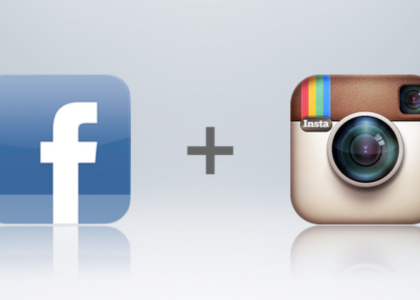Executive Summary
Apple Inc. is widely regarded as one of the most successful technology companies in modern business history, with a market capitalization surpassing $2.8 trillion (as of early 2024). This case study explores how Apple’s business strategy—anchored in ecosystem integration, premium product positioning, vertical integration, and retail control—has powered sustained revenue growth, global market leadership, and a fiercely loyal customer base.
Strategic Context
When Steve Jobs returned to Apple in 1997, the company was on the brink of collapse. Fast forward to today, and Apple has become a global symbol of innovation, design, and consumer loyalty. The turnaround and scaling success story is a textbook example of holistic strategy execution across product design, branding, distribution, and customer experience.
Core Strategic Pillars
A. Ecosystem Integration (The Apple Walled Garden)
Apple’s core differentiator lies in its tightly integrated ecosystem. Devices, software, and services work seamlessly, creating switching costs that lock users in and grow revenue across multiple touchpoints.
- Devices: iPhone, Mac, iPad, Apple Watch, AirPods
- Software: iOS, macOS, watchOS, iCloud
- Services: Apple Music, Apple TV+, iCloud+, Fitness+, App Store
Consulting Insight:
Apple’s ecosystem strategy represents a unique case of vertical and horizontal integration. Users entering through one device are incentivized to adopt others for a frictionless, cohesive experience. This boosts customer lifetime value and reduces churn.
B. Premium Pricing Strategy
Apple follows a value-based pricing model rather than cost-based. Every new product is introduced at a premium, emphasizing design, quality, and innovation.
- iPhones routinely command 40%+ gross margins despite intense competition.
- Apple earns over 85% of global smartphone profits (Counterpoint Research, 2023), even though it controls ~20% of global smartphone shipments.
Consulting Takeaway:
Apple demonstrates that differentiation through quality, experience, and brand can justify a price premium even in commoditized markets.
C. Vertical Integration & Control
From designing its own chips (A-series, M-series) to controlling the retail experience, Apple maintains end-to-end oversight over product quality and performance.
- Apple Silicon: Moving from Intel to in-house M1/M2 chips gave Apple control over performance, battery life, and user experience.
- Apple Stores: Instead of relying on third-party retail, Apple created immersive brand temples with trained staff and hands-on experiences.
Consulting Relevance:
This is a model for tech companies seeking quality control, cost efficiencies, and brand experience ownership via vertical integration.
Strategic Expansion & Global Play
A. Strategic Market Entry and Localization
Apple took a phased approach to global expansion:
- China: Partnered with local telecoms (e.g., China Mobile) and opened flagship stores in Beijing and Shanghai.
- India: Opened direct Apple Stores only in 2023 after manufacturing locally with Foxconn and Wistron (to comply with FDI regulations).
- Middle East & Latin America: High-end flagship launches and experiential campaigns to build aspirational value.
B. Regional Pricing Strategies
- Pricing adapted to currency fluctuations, taxes, and income levels.
- For example, Apple introduced lower storage models or continued older iPhone models at discounted prices in developing markets to broaden reach while maintaining brand prestige.
Services Strategy: The Shift to Recurring Revenue
Since 2015, Apple has aggressively grown its services portfolio:

This includes:
- App Store commissions (30% cut)
- Apple Music, Apple TV+, Apple Arcade, News+, iCloud
- AppleCare and Financial Services (Apple Pay, Apple Card, Buy Now Pay Later)
Insight: Apple moved from being a “device company” to a “platform + services” powerhouse. Services offer higher margins (60–70%) and recurring income.
Strategic Use of Brand Equity
Apple’s brand is ranked #1 in the world by Interbrand (2023), valued at over $500 billion. It is built on:
- Minimalist design language
- Privacy-centric marketing (“What happens on your iPhone, stays on your iPhone”)
- Carefully curated scarcity and launch hype
- Influencer-led unboxings and event-style launches (e.g., “Spring Loaded,” “Wonderlust”)
This consistent messaging creates emotional loyalty and community identity—turning customers into evangelists.
Supply Chain Strategy: Resilience and Risk Mitigation
Apple pioneered a global supply chain that combines:
- JIT (Just-In-Time) efficiency
- High-volume component negotiation (with TSMC, Foxconn)
- Diversification post-COVID: Moving iPhone assembly to India and Vietnam to reduce China dependence
- Environmental strategy: Apple aims for carbon-neutral products by 2030
Challenges and Consulting Opportunities
Despite its success, Apple faces strategic tensions:

Results & Impact
Apple’s strategy delivers measurable success:
- $394B revenue (FY 2022), with gross margins consistently around 43%
- Customer loyalty > 90% (CIRP, 2023)
- 1.8B active devices worldwide
- Services + Wearables = Future growth drivers
- Cash reserves of over $160B—providing strategic flexibility
Lessons for Business Strategy Consulting

Sources
- Apple Investor Relations (https://investor.apple.com)
- Interbrand Best Global Brands Report 2023
- Counterpoint Research, IDC Market Data
- Harvard Business Review: “How Apple Is Organized for Innovation”
- CIRP (Consumer Intelligence Research Partners) Loyalty Reports
- Bloomberg, TechCrunch, The Verge (2022–2024)






